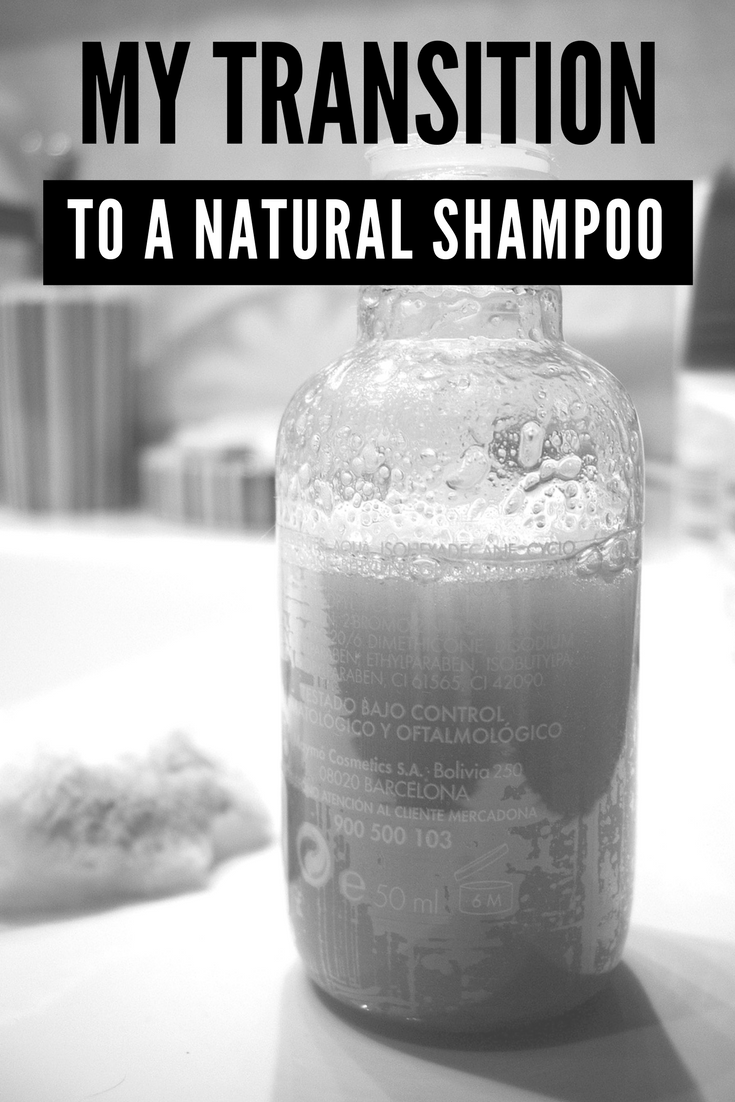
Making changes to our lives is not always super easy – in fact, more times than not it’s challenging and difficult.
Over the last few years we have transitioned from the everyday toxic products that most people use, to more body friendly items.
Items that don’t cause hormone disruption, aren’t proved to cause cancer, and don’t result in toxic overload that our bodies can’t handle. Oh how I wish I knew then what I know now … at least now I can make an honest attempt going forward.
We have DIY’d many of our own personal care products in addition to cleaners for the home, things for the kids and so much more – but one of the most challenging things to switch to has been shampoo.
Although I don’t leave the house daily, when I do, I prefer to look pleasant – switching to a natural shampoo is hard, and I didn’t want to have any adjustment period or risk looking or smelling funny. Shampoo is challenging – it’s not something that’s a one size fits all – every person is different, and that is why it has been a struggle to find something that truly does work.
I had tried the no-poo method of just baking soda and apple cider vinegar and had a challenging time – I didn’t feel as if I had done everything I possibly could to make it work for the long term. But.. I was determined to make it work this time and wanted nothing more than to stop falling back into the trap of commercial shampoo options.
While Young Living does have a natural shampoo, the cost was not realistic for a family of 7 – so I wanted to find something that was going to work, that wouldn’t break the bank and that was beauty friendly.
My hair is relatively long – almost to my butt. It’s not colored, and I don’t use stylers or heat on it, but it is somewhat thick.
Why switch to a natural shampoo?
Many commercial shampoos have a variety of ingredients and chemicals that can be absorbed through the skin and cause skin irritation and health ailments.
Triclosan – popular in toothpaste and deodorant, the EPA registers Triclosan as a pesticide. It can lead to endocrine disruption, triclosan-resistant bacteria, and environmental toxicity. (Source).
Polyethylene Glycols – derived from petroleum, you will most commonly find them in those things that need a cream base. Look for them listed as PEG-6 or PEG-150.
PEG compounds often contain small amounts of ethylene oxide. According to experimental results reported on in the National Toxicology Program’s Eighth Annual Report on Carcinogens, ethylene oxide increases the incidences of uterine and breast cancers and of leukemia and brain cancer. (Source)
Sodium Laurel Sulfate/Sodium Laureth Sulfate: usually found in cleaners like shampoo, face and body because it allows those items to foam. It is derived from coconuts, but is contaminated with a toxic byproduct during the manufacturing process.
Synthetic Fragrances: can include over 3,000 chemicals, and are not required to be disclosed by manufacturers – they are poorly regulated.
Fragrance ingredients may be derived from petroleum or natural raw materials. In addition to “scent” chemicals that create the fragrance, perfumes and colognes also contain solvents, stabilizers, UV-absorbers, preservatives, and dyes. (Source)
Formaldehyde Preservatives – one in five personal care products contains a formaldehyde preservative. Of course, formaldehyde is not listed on the label as formaldehyde … so look for any of these:
- DMDM hydantoin
- Imidazolidinyl urea
- Diazolidinyl urea
- Quaternium-15
- Bronopol (2–bromo–2–nitropropane–1,3-diol )
- 5-Bromo-5-nitro-1,3-dioxane
- Hydroxymethylglycinate
Now, I use a honey shampoo that works relatively well – my hair feels like it has much more moisture than ever before. But before I did this transition to honey & castile soap, I had a transition period to help my hair prepare for this healthy hair routine.
I had switched to a natural shampoo in the past – and over time, I crept back into regular products due to habit. This time I was determined not to go back to old habits, no matter how challenging – and despite how dirty or greasy my hair got, I told myself I would just tie it up and power through it.
I was happy and also proud of myself for sticking to my guns this time and lasting out the shift – which seemed to be easier the 2nd time around.
For a period of just over 2 weeks, I ditched commercial shampoo and recorded my transition:
June 19th, 2017:
- Wash: 1 Tbsp Baking Soda + 1 C. warm water, 2 drops Tea Tree Oil
- Slowly poured the baking soda over the head and worked into the scalp. Allowed to sit for 1 minute, then rinsed.
- Rinsed with apple cider vinegar – 1/4 C added to 3/4 C. water – allowed that to penetrate the scalp while I showered the rest of my body.
- Hair felt very heavy, although it felt clean it was a tiny bit greasy the next morning.
June 20th, 2017:
- Wash: 1 Tbsp Baking Soda + 1 C. warm water, 2 drops Tea Tree Oil
- Slowly poured the baking soda over the head and worked into the scalp. Allowed to sit for 1 minute, then rinsed.
- Rinsed with 1 C. whey from making cheese, allowed to sit for 1 min, then rinsed.
- Hair felt a little heavy, hard to comb.
June 21st, 2017:
- Wash: 1 Tbsp Baking Soda + 1 C. warm water, 2 drops Tea Tree Oil
- Slowly poured the baking soda over the head and worked into the scalp. Allowed to sit for 1 minute, then rinsed.
- Rinsed with 1 C. whey from making cheese, allowed to sit for 1 min, then rinsed.
- Hair felt very heavy. Pulled back into a bun, hair looked a little greasy… was very very hard to comb.
June 22nd, 2017:
- Wash: 1 Tbsp Baking Soda + 1 C. warm water, 2 drops Tea Tree Oil
- Slowly poured the baking soda over the head and worked into the scalp. Allowed to sit for 1 minute, then rinsed.
- Rinsed with 1/4 C. apple cider vinegar + 3/4 C. water and allowed that to sit for 1 minute while I showered the rest of my body.
- Hair felt much cleaner. Easy to comb. Hair is lighter and didn’t seem greasy.
June 23rd, 2017:
- Wash: 1 Tbsp Baking Soda + 1 C. warm water, no essential oil.
- Slowly poured the baking soda over the head and worked into the scalp. Allowed to sit for 1 minute, then rinsed.
- Rinsed with 1/4 C. apple cider vinegar + 3/4 C. water and allowed that to sit for 1 minute while I showered the rest of my body.
- Hair was a bit heavy, but didn’t seem greasy and looked relatively clean.
June 24th, 2017
- Wash: 1 Tbsp Baking Soda + 1 C. warm water, 2 drops Tea Tree Oil
- Slowly poured the baking soda over the head and worked into the scalp. Allowed to sit for 1 minute, then rinsed.
- Rinsed with 1 C. of whey (from making cheese). Allowed to sit in the hair/scalp for 2 minutes while I showered. Then rinsed with lukewarm water.
- Put hair up in a bun, didn’t have any greasiness but hair was heavy.
June 25-27, 2017
- Wash with honey/castile soap shampoo (recipe below). Used 2-3 pumps and massaged into the scalp (not the ends).
- Rinsed with 1/4 C. apple cider vinegar + 3/4 C. water and let that sit for 1 minute on the scalp until I was done in the shower. Then rinsed.
- I put my hair up overnight, then took down in the morning each day to comb out. It didn’t feel dry. It felt light and it felt like it had more life. I did end up putting it back up for the fact that I was cooking, but at the end of each day took it back down and it felt quite thick.
After this relatively short transition, I wash my hair every other day with honey and castile soap – I’ll rinse with either whey (from making cheese) or apple cider vinegar. In the past, I had to wash daily and my hair would seem very dry with dry spots on my scalp that would occasionally scab up. Despite my hair being somewhat dry, if I didn’t wash it every day, then it would get very heavy and really oily.
I love using whey or apple cider vinegar to rinse my hair – both seem to get rid of the junky build up and give my hair a nice, clean rinse that doesn’t build up. My hair feels and looks incredibly clean and full of moisture. Once a week I do a baking soda wash (1 Tbsp + 1 C. water) and an apple cider vinegar rinse (1/4 C. ACV + 3/4 C. water) – then every other day I do a shampoo of honey and castile soap.
My hair has responded well – it’s not dry, definitely not itchy and the dry patches on my scalp that I once had are now gone. My hair doesn’t feel starved for moisture – in fact it’s the opposite. It’s easy to comb through and it feels normal once again.
If you are looking for a natural shampoo, this DIY is super easy and works great. One thing that I have learned is that what works for one person may not work for another. Some people may require a longer no-poo period instead of just a week…
2 Ingredient Natural Honey Shampoo
- 3/4 C. raw honey, warmed ever so slightly in the microwave on low heat
- 1/4 C. castile soap, unscented
- optional: 2 drops each Lavender essential oil, Cedarwood essential oil and Rosemary essential oil
Combine all ingredients in a bottle with a pump – use one or two pumps per shampoo. Avoid using daily. Castile soap is rated as a “1” on the EWG scale (meaning that it’s body friendly), but it will sting if you get in your eyes – so use caution when rinsing the shampoo from your hair.
Have you made your own shampoo? Have you tried baking soda and apple cider vinegar?
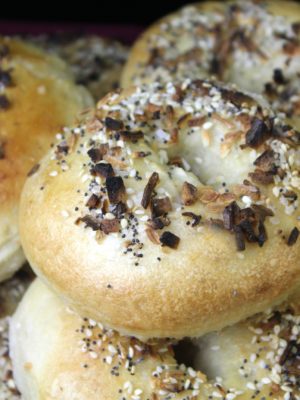
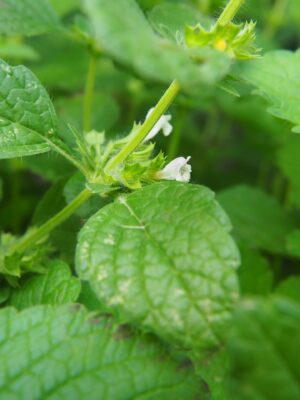
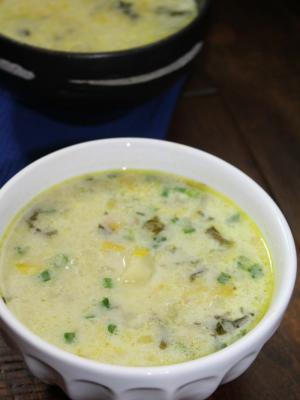
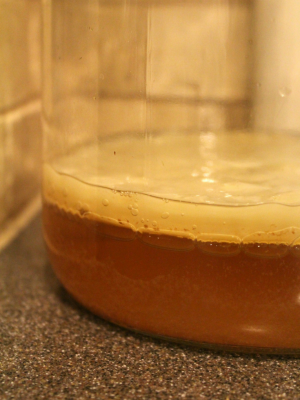
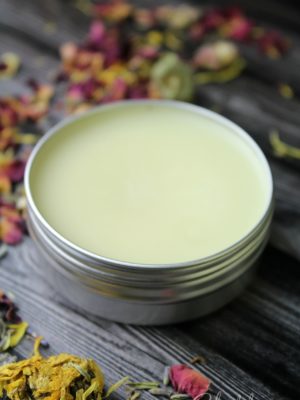
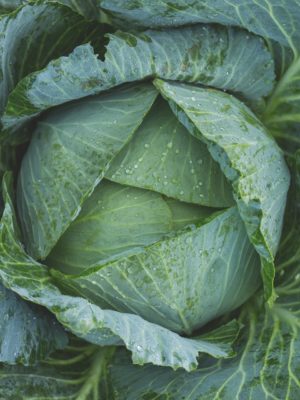

Oh my goodness, that is so helpful! I made the switch several weeks back (and am not using the conditioner) and was wondering about the effects you are describing…Will try these steps!
I am trying to get my husband on board … I think he could use a change. But he’s unwilling 😉 So far I’m loving this – but it hasn’t been easy.